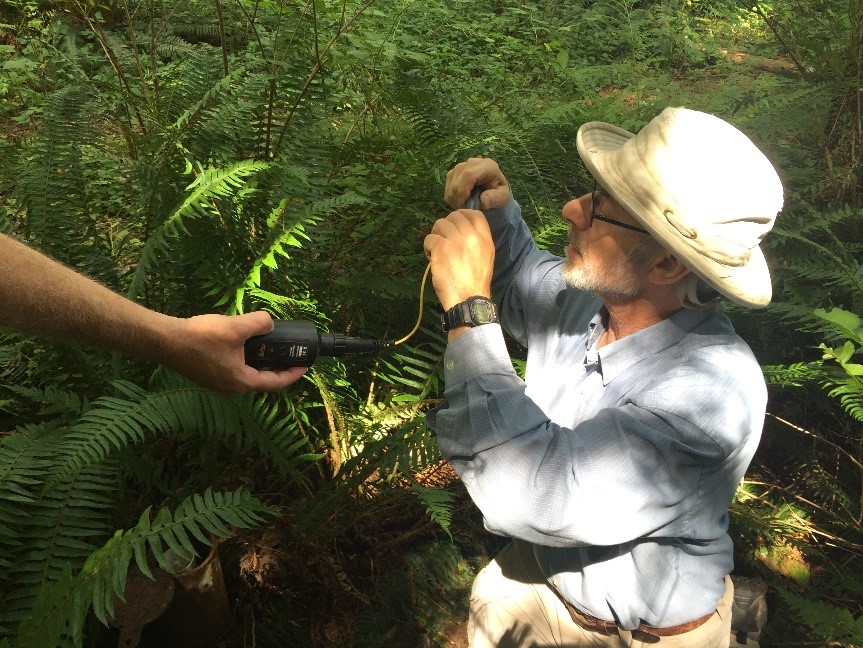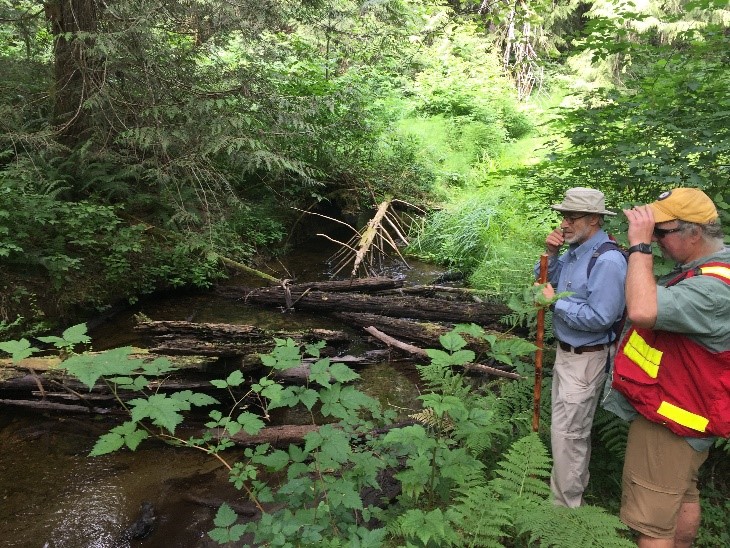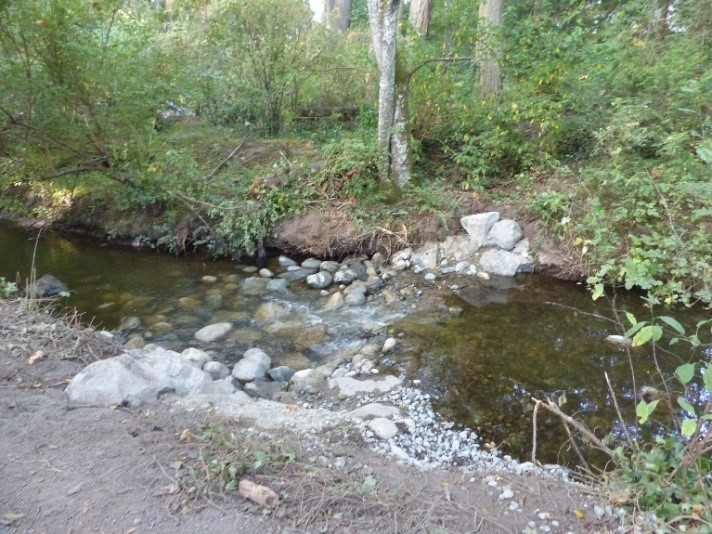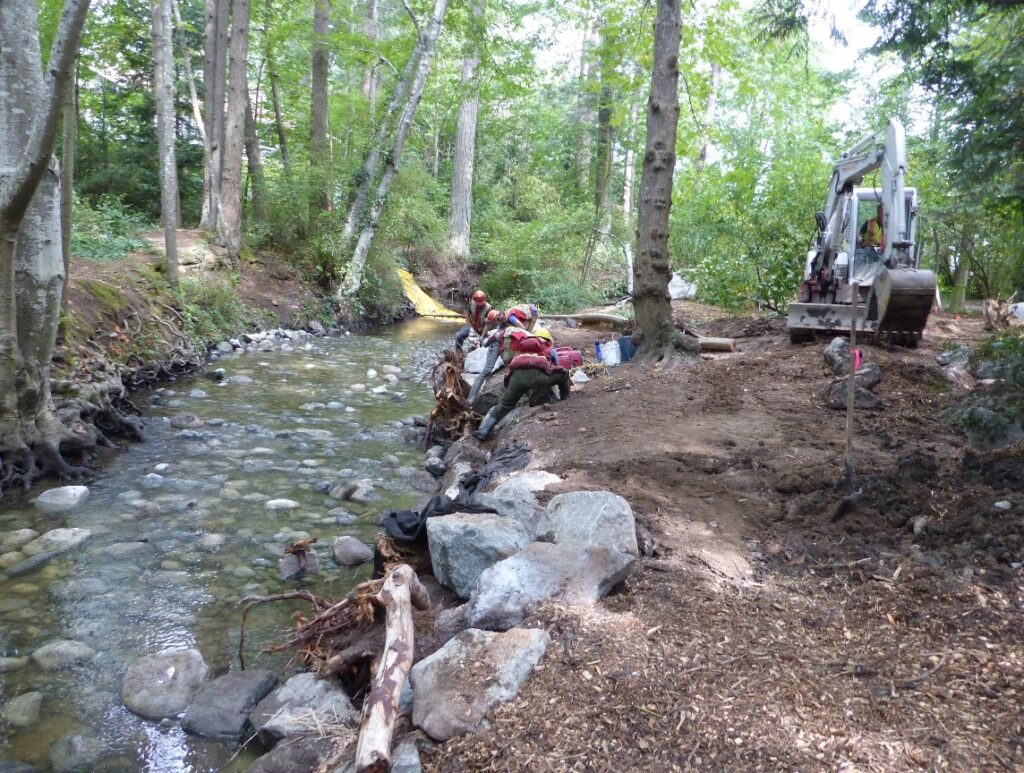The Freshwater Fisheries Society of BC kicked off its pilot Native Trout Stewardship Initiative with the funding of seven trout conservation-focussed projects in 2019. The purpose of this initiative is to support local stewardship groups seeking to protect, conserve, and recover native trout species in B.C. watersheds. The focus in urban and developed areas is primarily on coastal cutthroat trout, a fish highly prized by anglers, but frequently forgotten because they aren’t as big or as numerous as salmon. However, where funding permits, other projects will be considered.
In part one of the series, we looked at three projects taking place on Vancouver Island. In part two, we’ll take a look at another two projects that we helped fund in 2019.
Project Profile – Morrison Creek Hydrology Study
Morrison Creek is a small but highly productive tributary of the Puntledge River, located within the municipality of Courtney. Unlike many of Vancouver Island’s trout and salmon rivers, where summer periods are increasingly seeing droughts and elevated water temperatures, Morrison Creek is characterized by reliable, cool, flowing water all year long. Why? A rare combination of an extensive complex of interconnected, undamaged wetlands combined with perpetual spring-water supply mean salmonids enjoy cool waters year ’round. This stream supports a robust population of coastal cutthroat trout as well as good returns of coho, pink, chum, and the occasional chinook salmon. This little stream packs a punch for its size!
The Morrison Creek Streamkeepers want to keep it that way. In a region characterized by ongoing land development, healthy streams such as this are becoming increasingly rare. Particularly in the face of climate shifts, protecting reliable flows for fish is critical. Identifying major sources of water that provide ample base flows is the first step for protection.
Local Streamkeepers seek to protect headwaters of a special East Vancouver Island stream
With funds from the Freshwater Fisheries Society of BC, the Streamkeepers group is working with hydrology experts to monitor flows and temperatures throughout the watershed for a year to establish normal flow cycles. The group then plans to accurately map both tributaries and wetlands within the headwaters of the Morrison watershed. This information can be used to assist land-use planning, and ensure key water sources are adequately protected.
Partners include: Current Environmental, Comox Valley Land Trust, GW Solutions, Youth in Ecological Restoration, and Individual donors – Murray Little & Gael Arthur


Project Profile – Colquitz River Restoration
The Colquitz River has suffered the usual abuses of an urban watershed for decades, including loss of fish habitat, flow alterations, and water contamination. Somehow, however, trout and salmon persist, undoubtedly due in large part to the tireless efforts of various stewardship groups in the area who want to see fish numbers return to healthy population sizes.
Peninsula Streams Society has partnered with the District of Saanich and others to undertake a project to restore spawning and rearing habitat for cutthroat trout and coho salmon in a key location along the Colquitz River Trail. Having been “loved to death” over the years from foot traffic, this section of Copley Park suffered from vegetation removal and soil compaction. The creek lacked key structural features along this reach as well, including spawning gravel, riffles, large rocks, woody debris, and rearing pools.
Resuscitating an urban stream in the heart of Greater Victoria
In 2019, the Freshwater Fisheries Society of BC contributed funds to support the first phase of restoration along this 120-metre section of creek. The work began in August. Restoration to date has included the construction of one Newbury weir with spawning gravel, and two long boulder-cluster runs with spawning gravel additions. As well, the excavation of pools and addition of large rocks and woody debris have created habitat complexity that will benefit fish and reduce excessive bank erosion. The damaged riparian area has been mulched, had woody debris added, and will be planted later in the fall. Fencing has been installed to restrict the public from the riparian area. Public signage will be installed describing the initiative and fish life cycles.
The second phase in 2020 will involve restoring the next 100 metres downstream with the addition of more riffles, pools, and habitat-complexing features. This restoration, when complete, will offer an excellent, accessible outreach opportunity for the public to learn more about fish habitat, and to view spawning fish in an urban setting.
Partners and funders include: District of Saanich, Pacific Salmon Foundation, Ministry of Transportation and Infrastructure, Freshwater Fisheries Society of BC, BC Gaming, Victoria Fish and Game Protective Association, Haig-Brown Fly Fishing Association, Portage Inlet Cutthroat Initiative


Are you interested in volunteering your time to help improve fish habitat in your local waterways? Get in contact with the group organizers above, or check out one of the many conservation organizations in B.C., such as the BC Wildlife Federation, to see what opportunities are available.
Author: Sue Pollard, Freshwater Fisheries Society of BC